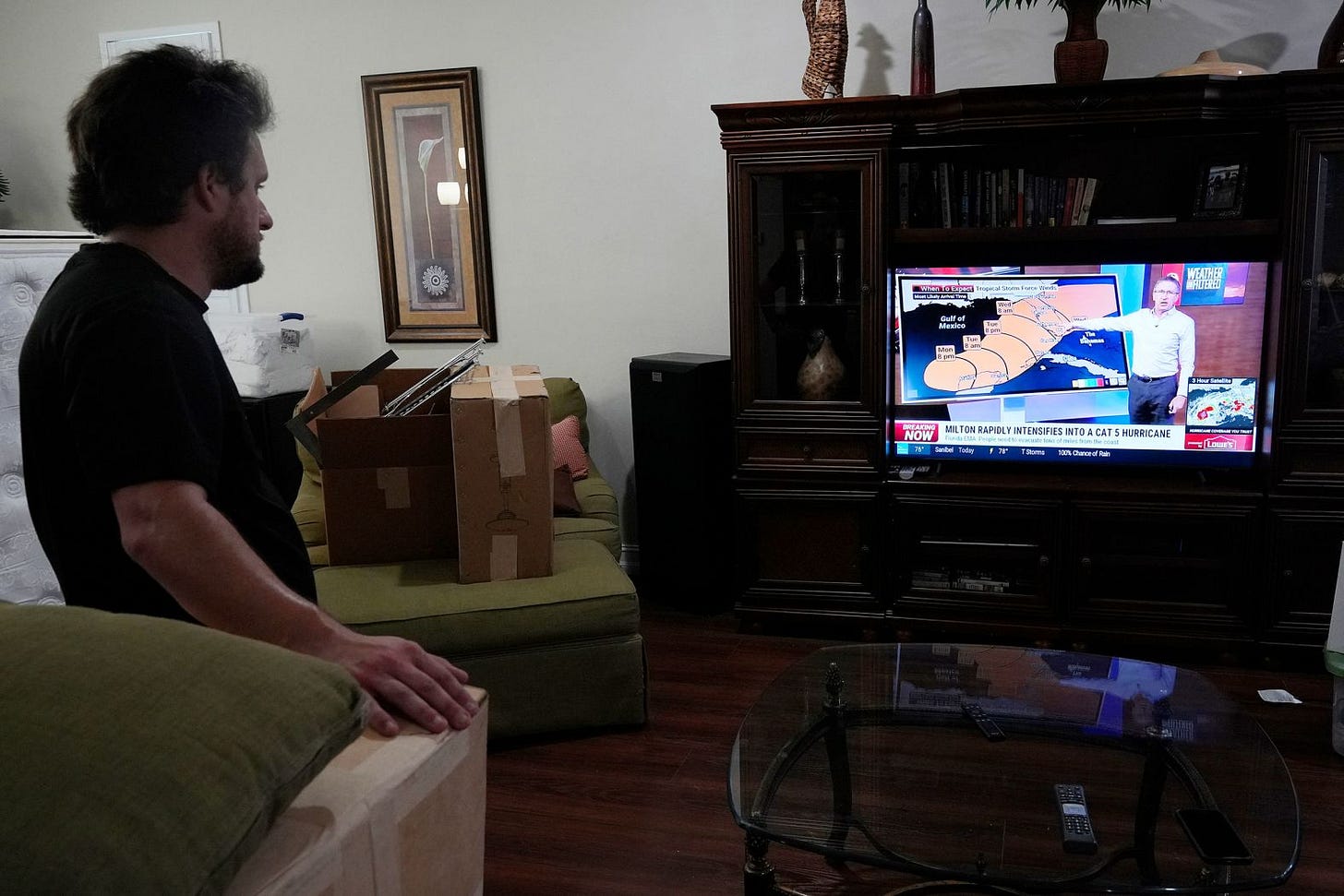Hurricane Milton;
On October 7, NBC’s South Florida meteorologist Juan Morales choked back tears of fear and rage reporting on Hurricane Milton.
“This is an incredible hurricane. It dropped 50 millibars in ten hours. This is just horrific. You know what’s driving this, I don’t have to tell you, global warming.”
It was a Cri de Coeur like the one uttered by Herb Morrison reporting on the explosion of the Von Hindenberg blimp as it landed in Lakehurst New Jersey in in 1937.
“Get this Charley. Get this Charley It’s burned and crashed, and all the passengers screaming around here. Oh my, get out of the way please. This is one of the worst catastrophes in the world. Oh the horror, oh the humanity.”
Morales’s forecast came on the heels of Hurricane Helene that had killed over 230 people with 600 still unaccounted for. Some of those people had evacuated from Tampa and now Hurricane Milton was expected to make landfall there with a twelve to twenty foot storm surge, more than enough to wash away the vulnerable barrier beach communities of Florida’s West Coast.
The only life-saving thing to do was evacuate the entire coast sending hundreds of thousands of people shell-shocked and confused about where to go to avoid the apocalypse bearing down on them… once again.
This was the background music for the meeting I attended at the Blue Ocean Music Hall in Salisbury Massachusetts.
The meeting had been convened to discuss building an artificial reef to protect 200 modest beachfront homes and the only evacuation route for the Seabrook Nuclear Power Plant.
It was fitting that the idea had been hatched out of DARPA, the Defense Advanced Research Projects Agency they guys who had developed the internet and was now being championed by a group of high-tech MIT wizards.
The plan called for building a two- mile breakwater half a mile offshore to absorb ninety percent of the incoming waves. The structure would also create a lee where currents coursing along the shore would drop their load of sand hopefully in front of the houses.
The homeowners had already spent $200,000 bringing in sand that had washed away the following day’s storm. Then they had convinced the state to spend three hundred thousand more dollars to protect the state beach and their homes.
Now they wanted the federal government to put up six million more dollars from the President’s Infrastructure Bill to build up the washed away sand dunes.
It was not the forum to question the plan but are you kidding me?
Hadn’t anyone learned the lesson of hurricane Helene that there are no havens safe from the effects of climate change and hadn’t anyone learned the lessons of Fukushima and Three Mile Island that you shouldn’t place nuclear power plants on vulnerable coasts and flood prone rivers?
The real question was where were we going to put all the hundreds of millions of people displaced from homes threatened by heat, fire, floods and storms generated Climate Change’s hotter oceans, and hotter atmosphere.






“Everyone talks about the weather, but no one does anything about it.” Mark Twain